A shady garden is beneficial in more ways than one. To add to the long line it provides, it would be nice to incorporate flowering plants that thrive effortlessly in shade gardens to brighten up the place with their dazzling color.
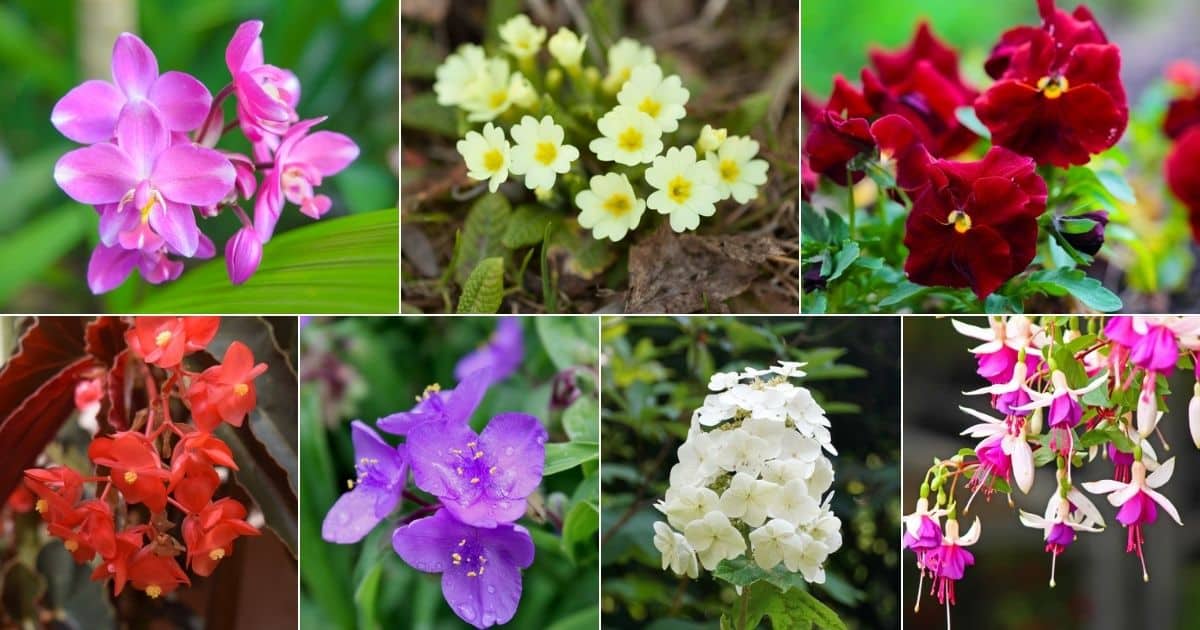
Your shade garden does not have to be dull. We’ll be giving you a long list of options for flowering plants that will thrive in the shade.
Below are some of the most beautiful flowering plants and flowers for shade!
Jump to:
- Best Flowering Plants and Flowers for Shade
- 1. Primrose 'Primula Vulgaris'
- 2. Corydalis
- 3. Viola
- 4. Astilbe
- 5. Spiderwort
- 6. Fuchsia
- 7. Lily of the Valley Shrub
- 8. Ferns
- 9. Hellebores
- 10. Caladium
- 11. Bletilla
- 12. Foam Flower
- 13. Hostas
- 14. Begonia
- 15. Toad Lily
- 16. Oakleaf Hydrangea
- 17. Heuchera
- 18. Dicentra
- 19. Brunnera
- 20. Epimedium
- 21. Lingularia
- 22. Asarum Canadense
- 23. Lobelia
- 24. Dead Nettle
- 25. Impatiens
- Is the use of mulch necessary for shade-loving plants?
- How does wind affect shade plants?
- Final Note
Best Flowering Plants and Flowers for Shade
Plants naturally need varying levels of sunlight to thrive, but you will be amazed at the list of those that can do perfectly well in shade gardens.
Find below 25 beautiful ones to consider for your shade gardens.
1. Primrose 'Primula Vulgaris'
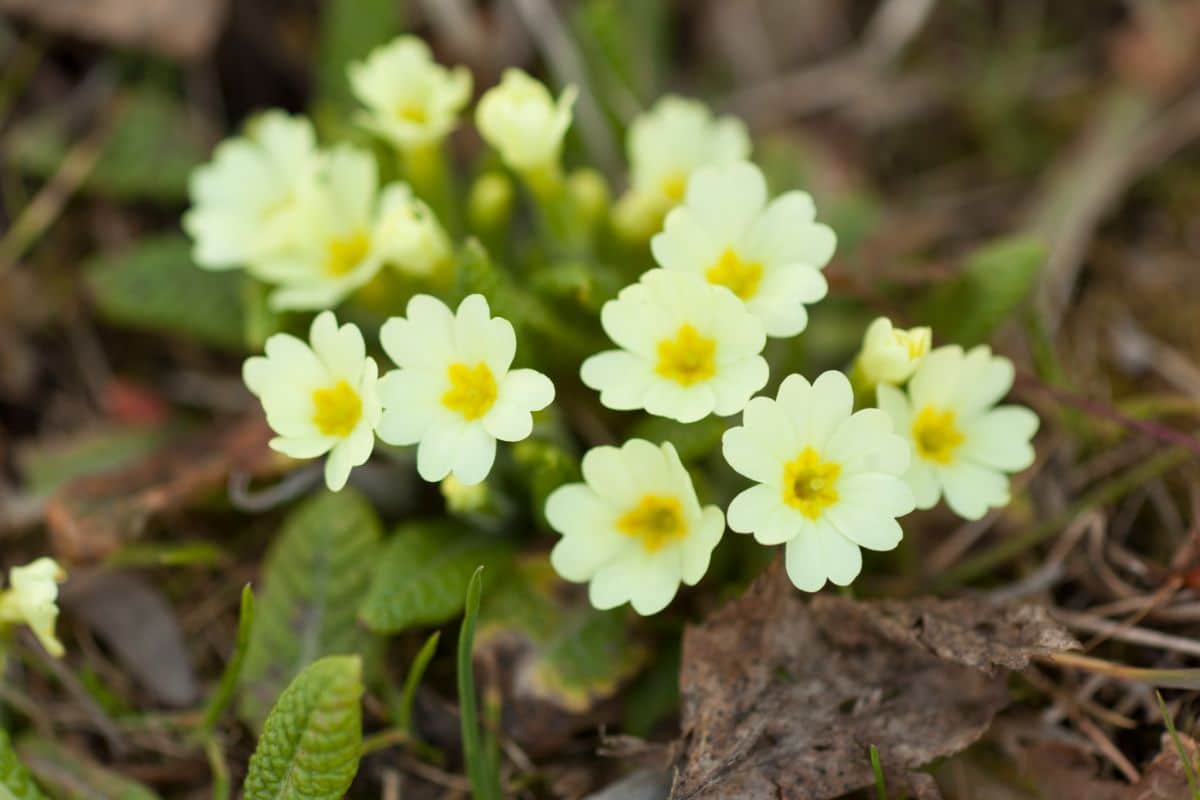
Primula Vulgaris is a cultivar of the Primrose plant under the 'Primulaceae family tree that thrives without issues in shady gardens. They are prevalent and known as the wild specie of the plant.
They are an indigenous plant of Northwest Africa, Southern & Western Europe, including some parts of Southwest Asia.
Primula Vulgaris can grow as tall as 20 inches, the same with its spread.
The Round-headed Himalayan Primrose Drumstick Primula and Giant Cowslip comes highly recommended as they do pretty great in shady gardens.
2. Corydalis
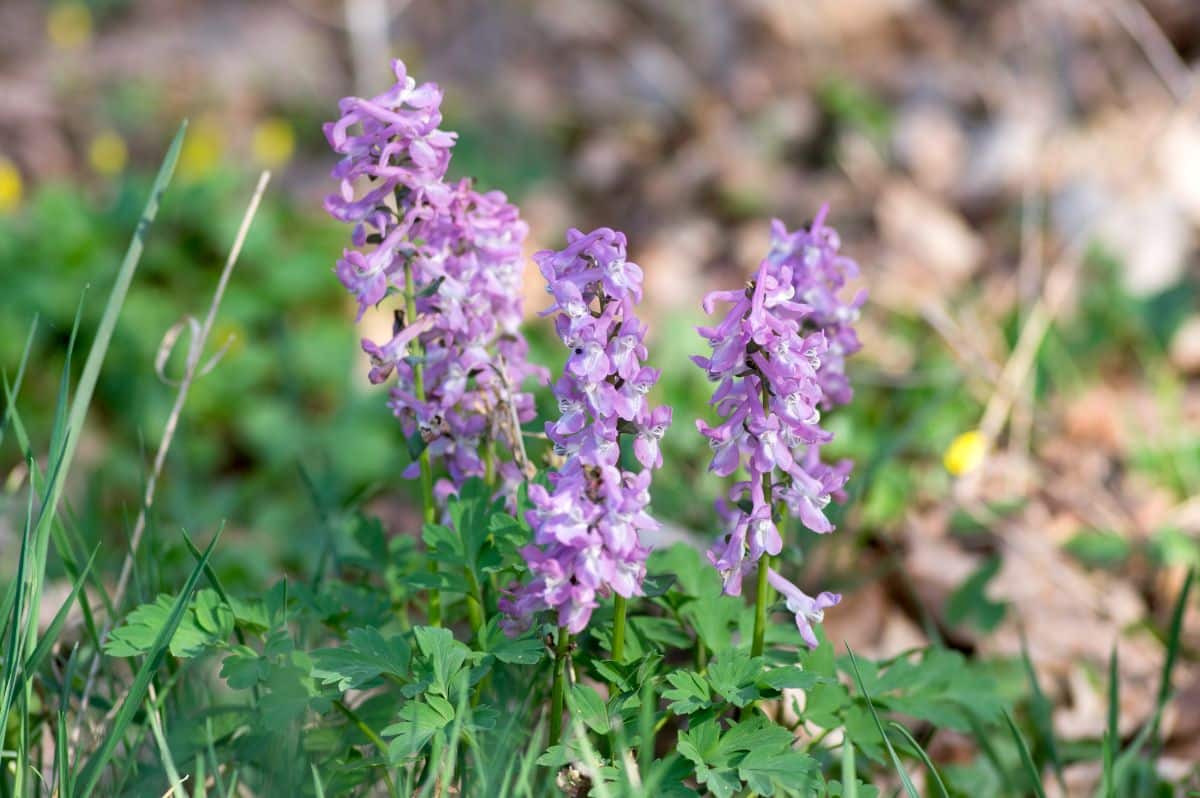
The Corydalis are blessed with an excitingly mild scent. They grow into a tubular shape when they bloom in Spring.
This shade-loving plant can be found available in deep purple colors or bright pink, with both offering great visual delight.
Corydalis is better suited for spacious gardens. They can attain a height of 3ft and a spread of about 1-2 ft.
3. Viola
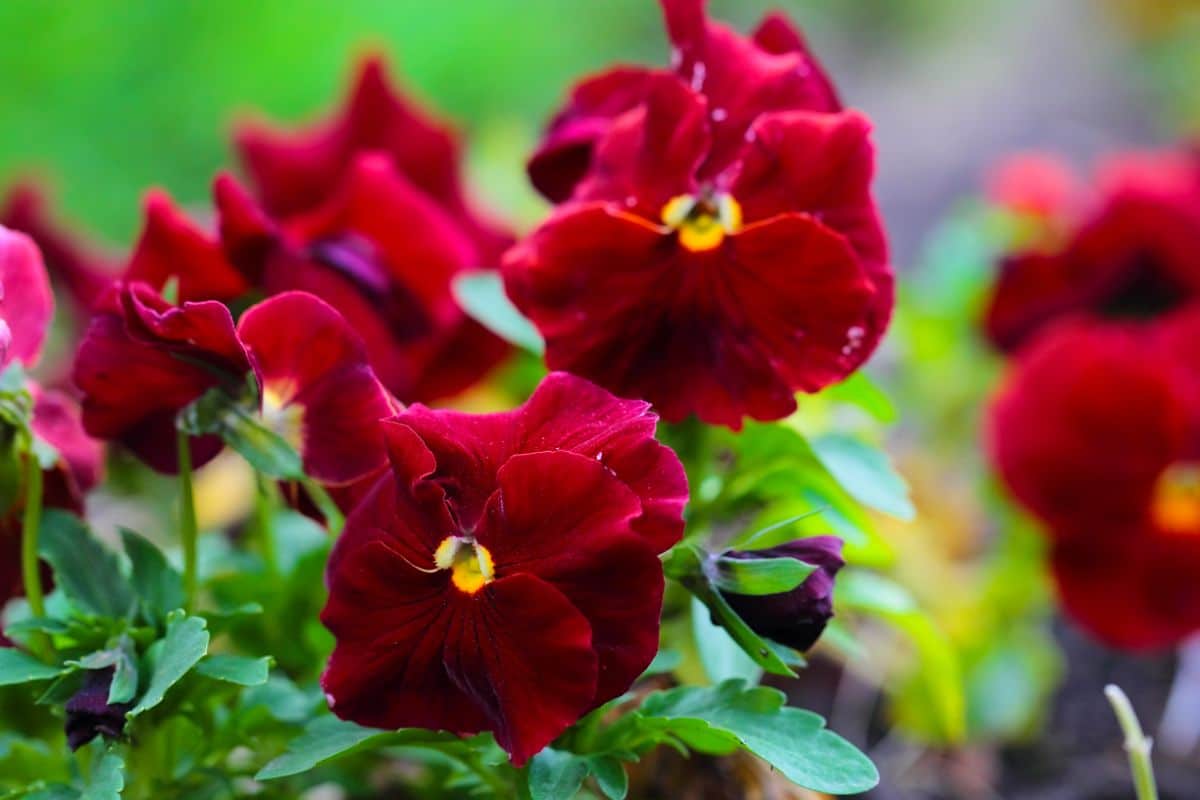
The Penny Picotee and Johnny Jump-up are varieties of the Viola plant to try out for your shade garden.
You must know the exact variety to go for, as the Viola plant has well over 500 variants, all of which have varying light requirements.
Some require full sun, while others will thrive well in partial shade.
4. Astilbe
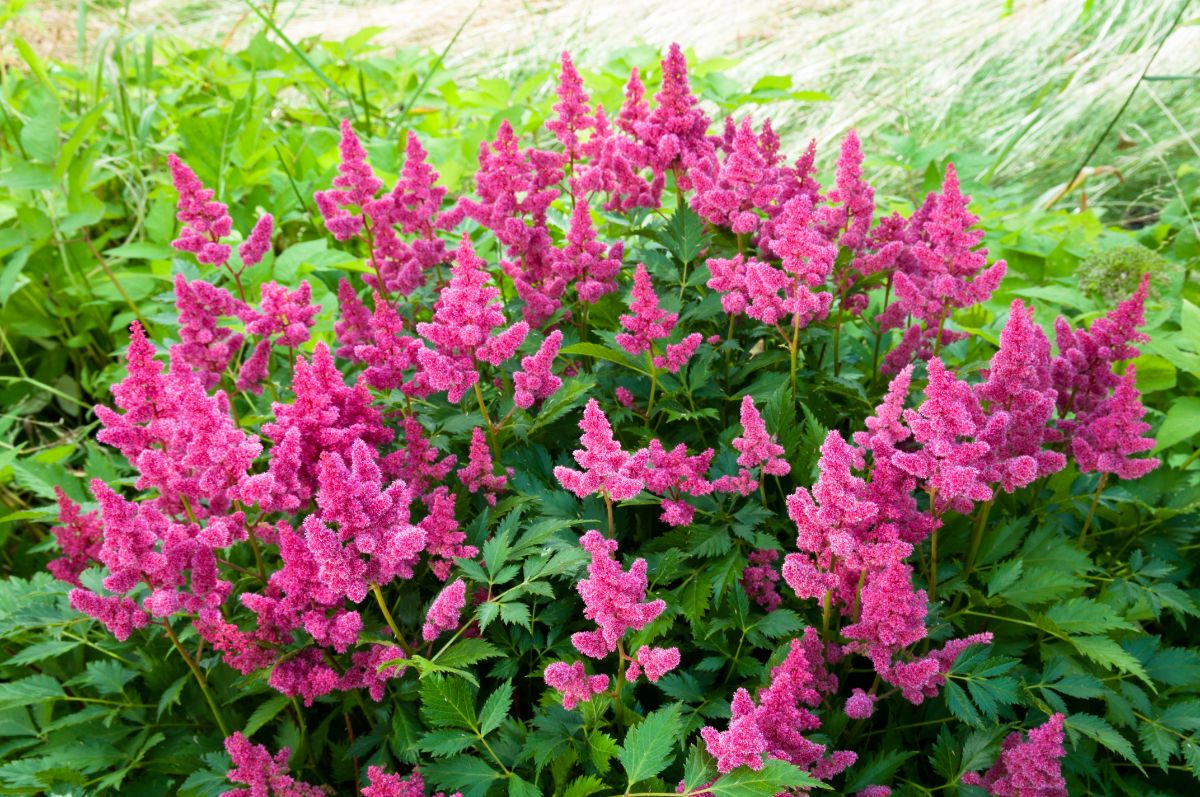
Astilbes are incredibly gorgeous flowers that look even more pleasing to the eye when grown in clumps alongside some other spring flowering, shade-loving plants like Hellebores, for example.
They are available in diverse shades like creamy white and pale/bright pink.
As a gardener, you will set yourself up for a failed venture if you plant the Astilbe in anything other than full-partial shade.
Their beautiful flowers will wilt before your eyes when exposed to the sun. Its height range is set at 6 inches - 5ft.
The Younique Carmine and Rise & Shine are ideal varieties to consider.
5. Spiderwort
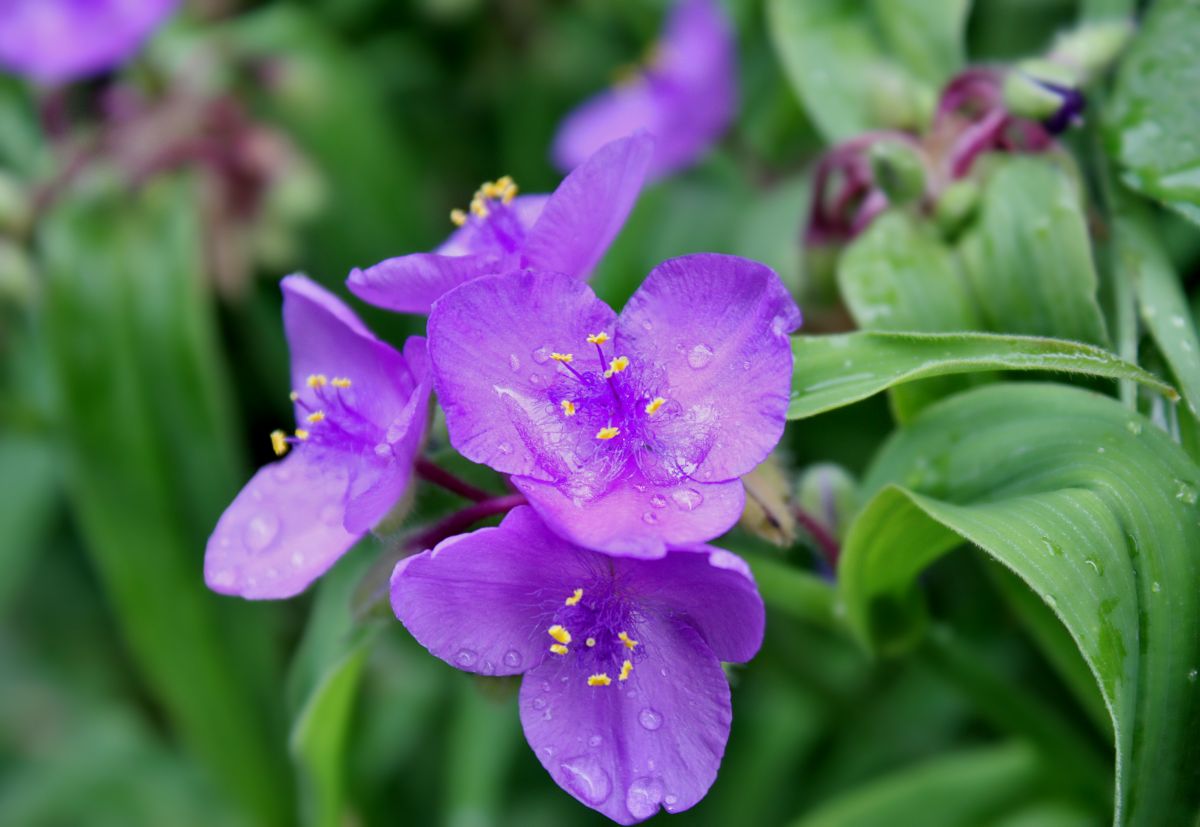
You cannot go wrong with the Spiderwort for your shade garden. The plant has strikingly long leaves and flowers colored blue-purple.
With suitable growth requirements, like; planting in moist, non-soggy soil, they will bloom in spring and attain an impressive overall height of 3ft based on the particular specie.
Ideal varieties to consider include Amethyst Kiss and Red grape.
6. Fuchsia

Fuchsias, also known as 'Tiarella,' are pretty annual flowers that fit perfectly in pots or hanging baskets because of how beautifully they drape down.
They are also shade-loving plants that can be easily grown and maintained.
7. Lily of the Valley Shrub
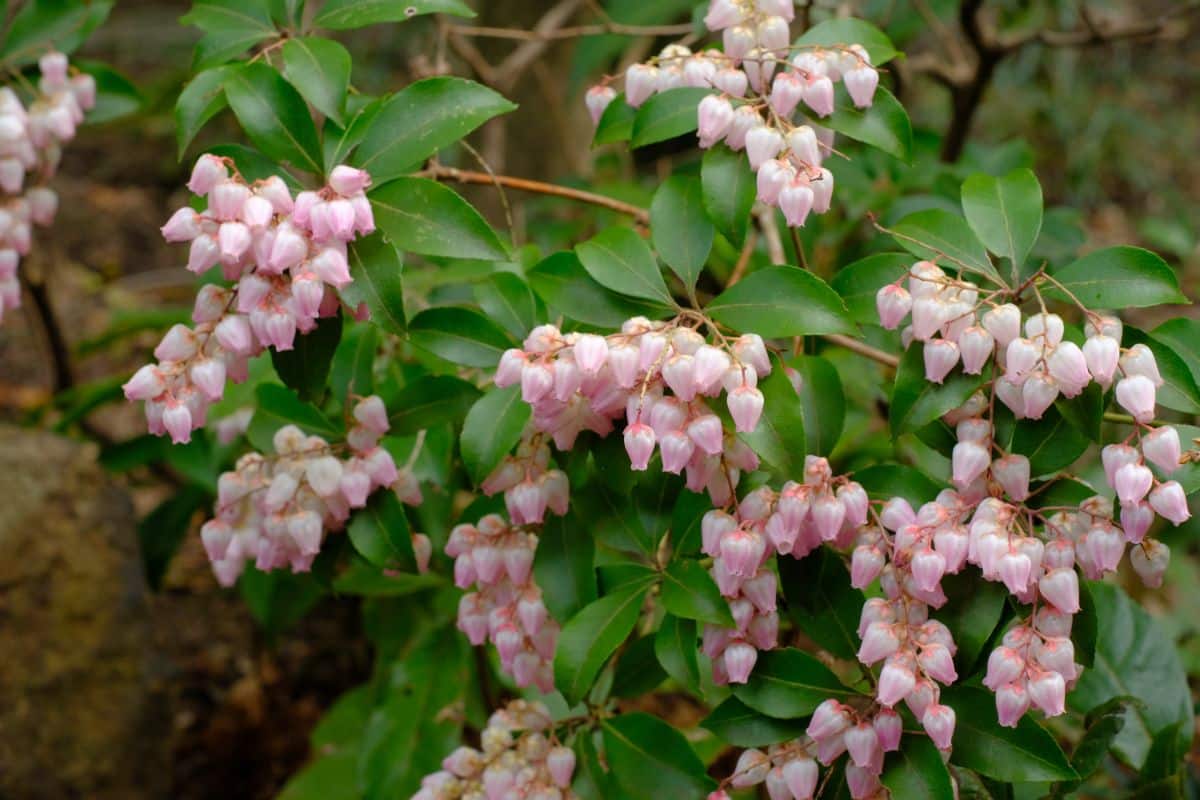
A key feature of the Lily of the valley plant is its ability to bloom for a prolonged period, beginning in early spring.
This shade-loving plant has a mind-blowing height range of 3 - 20ft and a width of 3 - 10ft.
8. Ferns
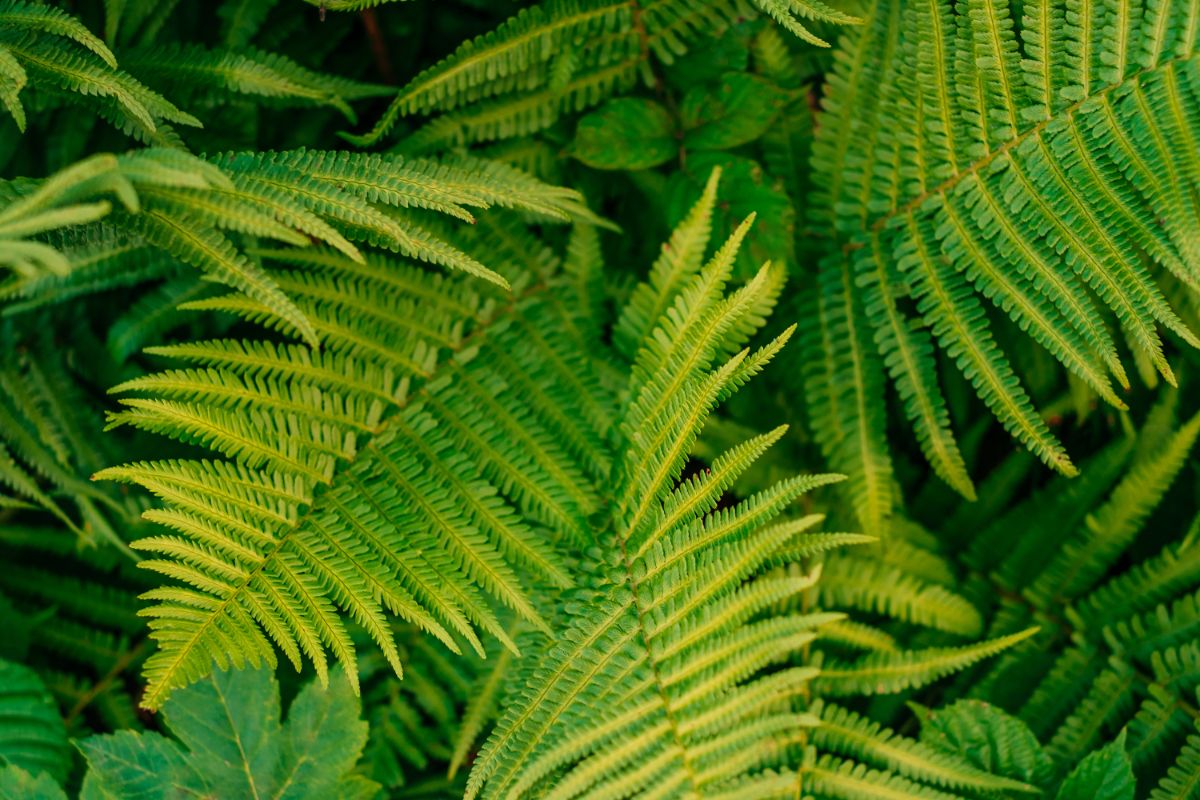
Ferns are natural shade-loving plants, and that explains why you are likely to find them majorly in shady forests.
The artistic way they spread to make beautiful ground covers and the lofty lacy arrangement they form is one attribute that has endeared it to many plant lovers and made it deserving of a spot on our list.
Its height range is 1 inch - 80ft, based on the particular variety.
We will, however, recommend varieties like the Autumn or Japanese garden for a shade garden.
9. Hellebores
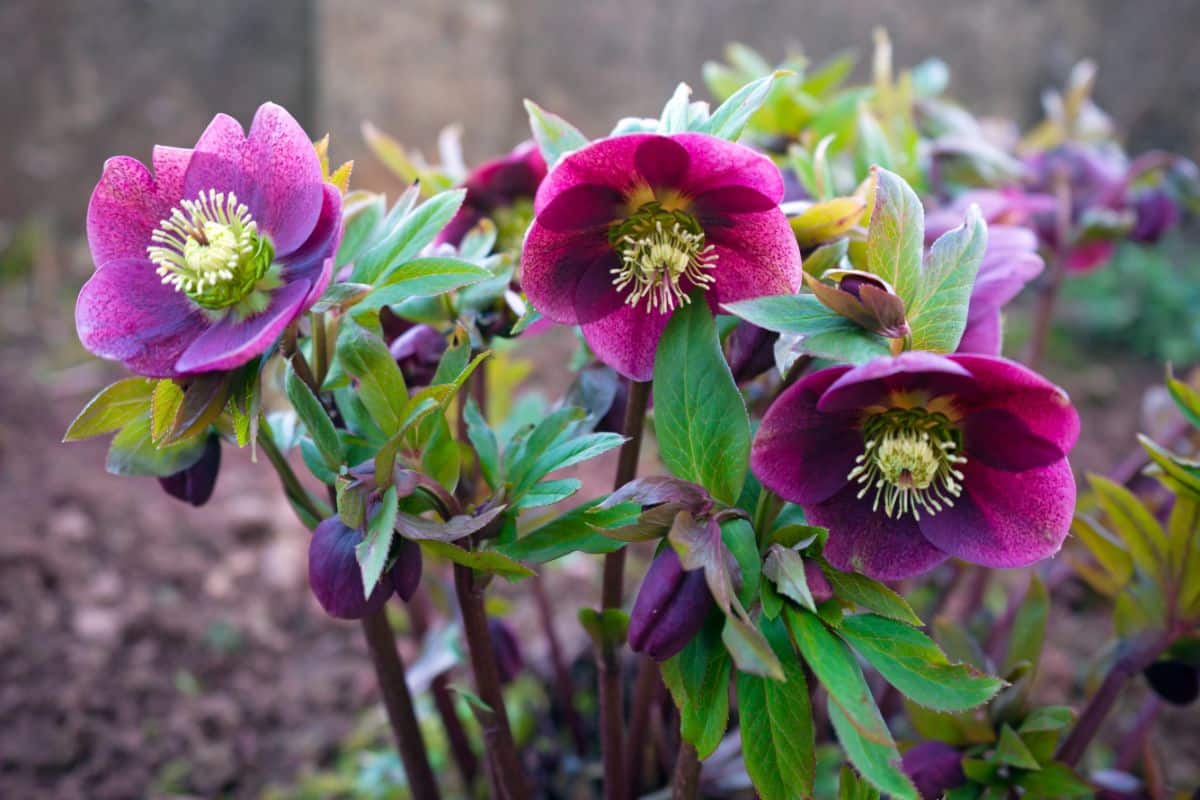
Hellebores are super for your shade gardens. Try out the Cherry Blossom or the Apricot Blush to brighten your garden space.
Hellebores would naturally bloom in late winter and last through to early spring.
10. Caladium
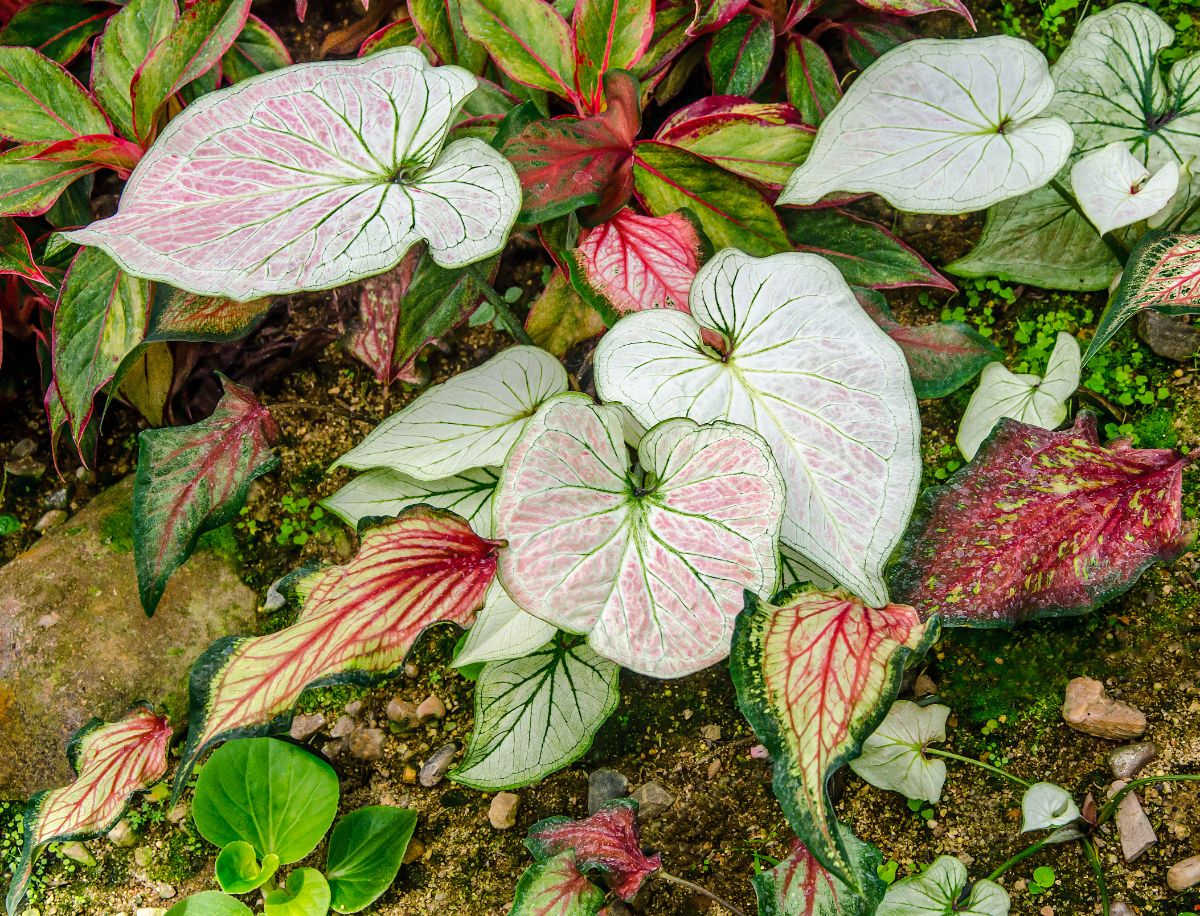
Caladiums are significant, heart-shaped leaves that make your garden space glow.
We recommend the Blushing bride, White Christmas or Heart to heart for shade gardens.
If you are going for any outside of these suggestions, be sure to enquire about the light conditions perfect for them as recent ones have been proven to be quite sun-loving.
Height range is about 6 inches - 3ft and a spread of 24 inches.
11. Bletilla
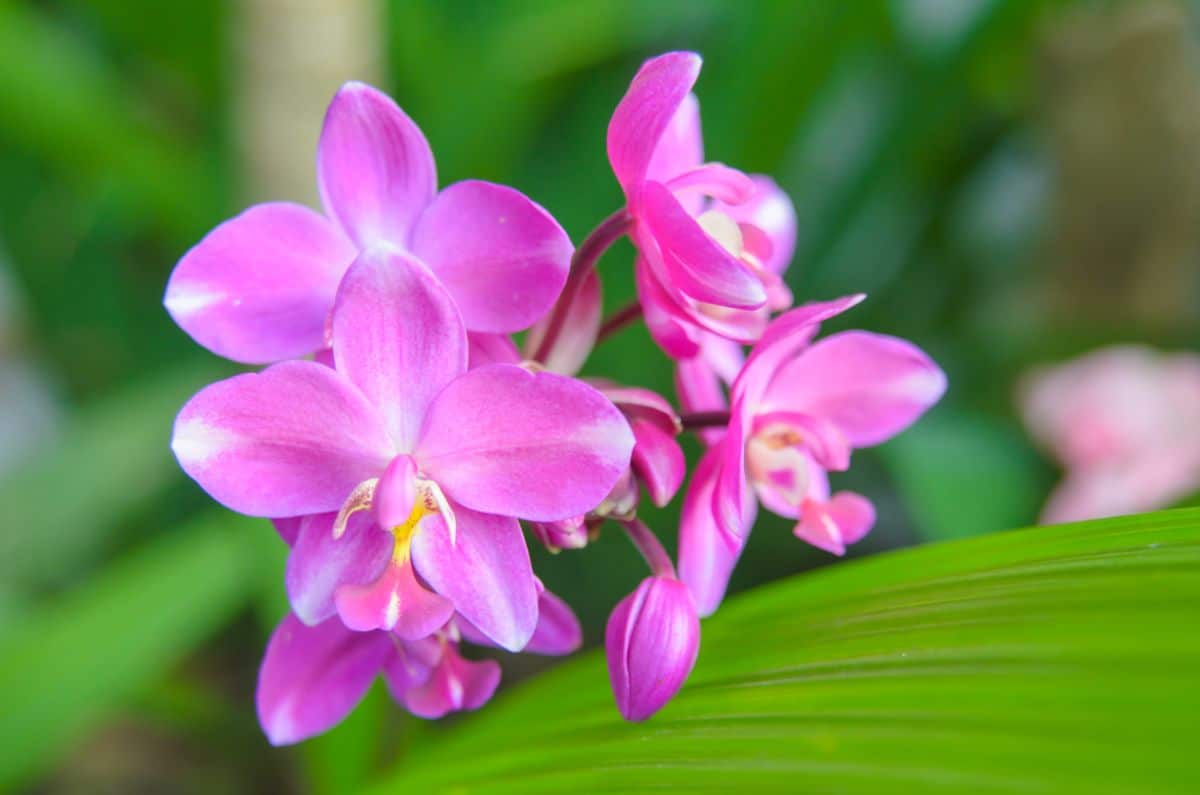
Ever heard of the 'Chinese Ground Orchid?' that is another name that the Bletilla plant goes by.
Bletilla is a beautiful, low-maintenance, shade-loving flower best grown in fall to achieve a possible spring bloom.
They have a height range of 1 - 3ft and a spread of about 6 - 12 inches.
The Striata is one variety that thrives without stress in the shade.
12. Foam Flower
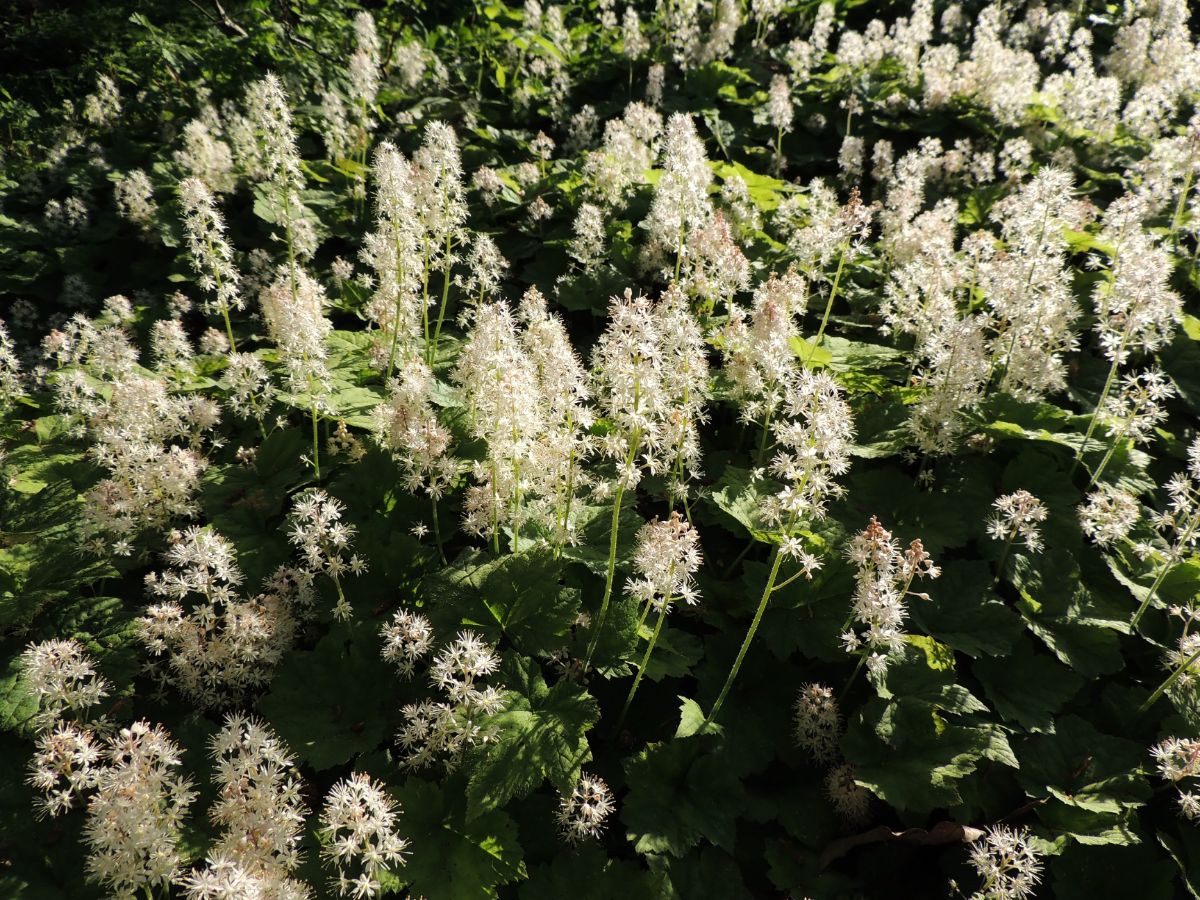
Foam flowers are cold-hardy perennials that spot large volumes of frothy flowers when they bloom, usually in early spring.
As you must have guessed, they are best grown in part - full shade. Ideal varieties to try out are the Cutting edge or Elizabeth Oliver.
Foam flowers have a height range of 6 - 12 inches and a 1 - 3ft spread.
13. Hostas
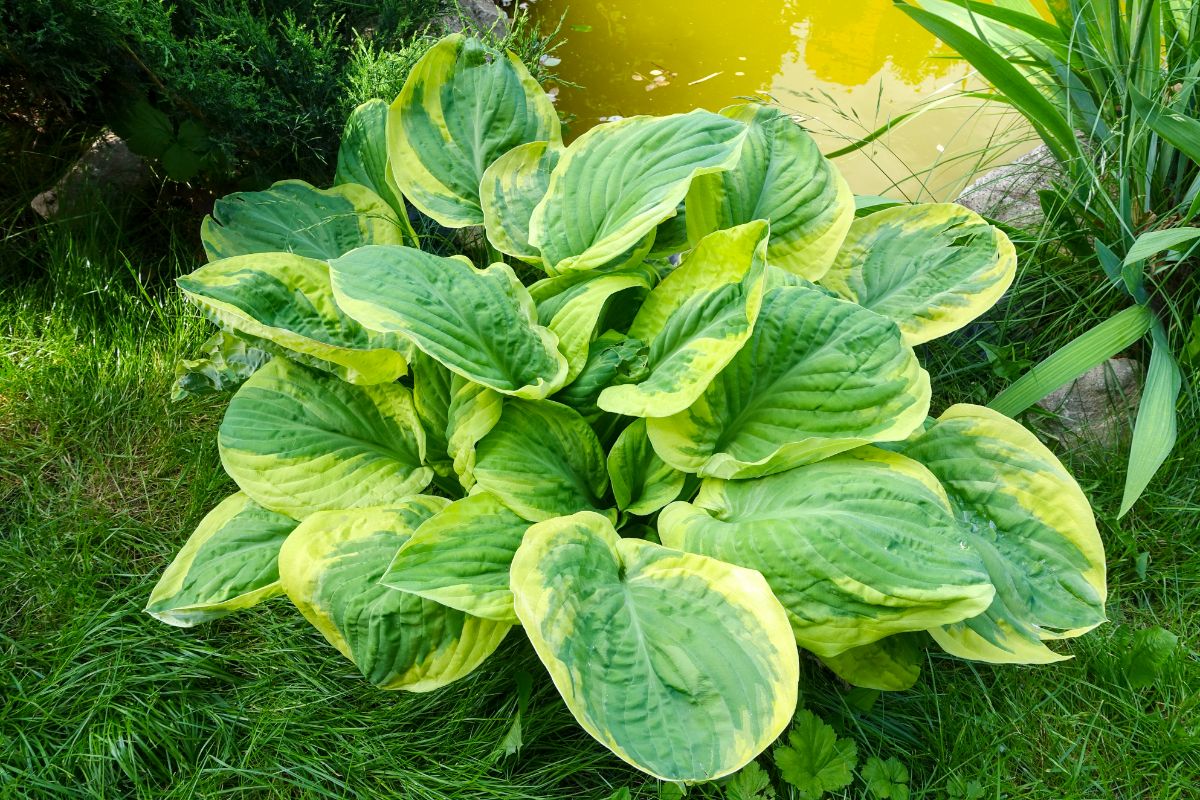
The hostas plant is yet another excellent choice for shade gardens, and a great plus is that they can be found in sizes from mini - extensive that is sure to fit whatever space concern you might have.
Hostas thrive best in moist soil and plenty of shade. They are, however, highly susceptible to slugs, rabbits, deer, and snails that threaten their well-being.
We recommend the Mouse ears or Sum and Substance for a shade garden.
14. Begonia
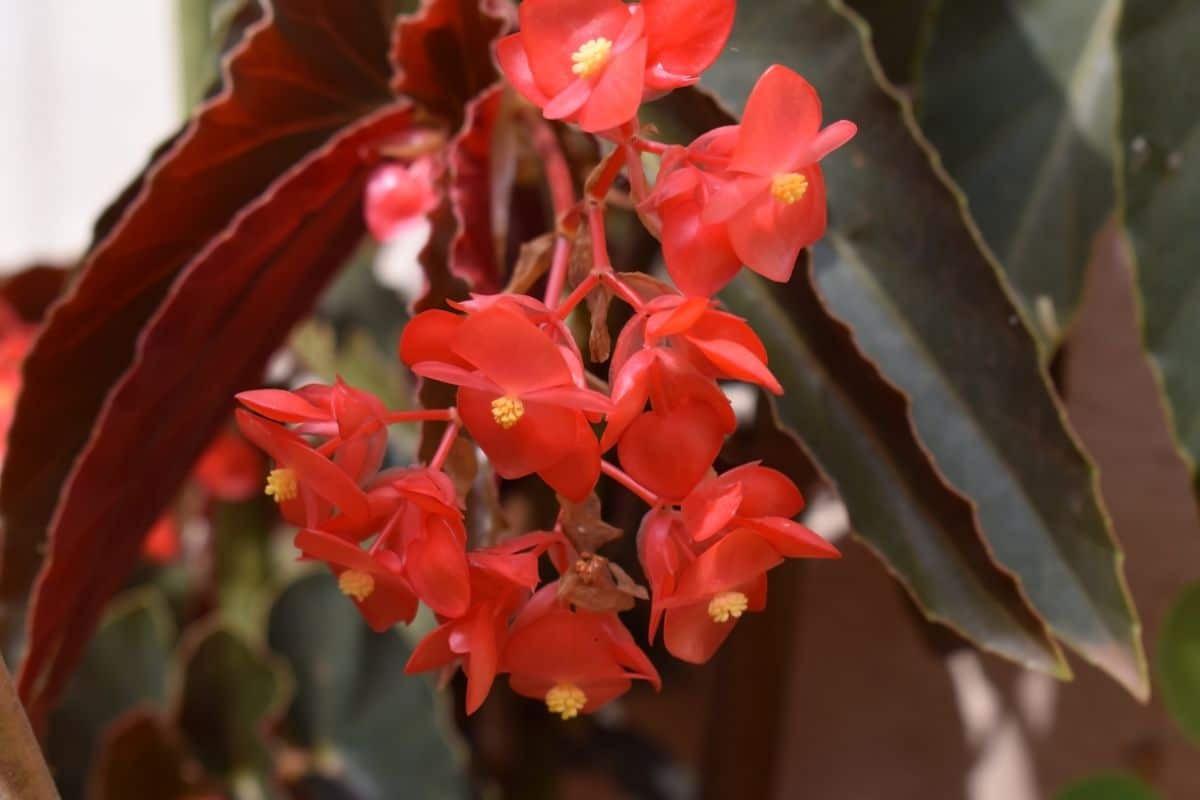
Begonias are highly versatile plants in the sense that they are capable of thriving in different conditions. Being trailing plants, they naturally look great in hanging baskets.
There are hundreds of species of begonia, so be sure to ask about the light requirements of the one you will be going for.
To be on the right track, consider varieties like Angel wing, Cane, or Wax.
Begonias have a height range of 6 - 3ft tall based on the variety and width range of 6 - 12 inches.
15. Toad Lily
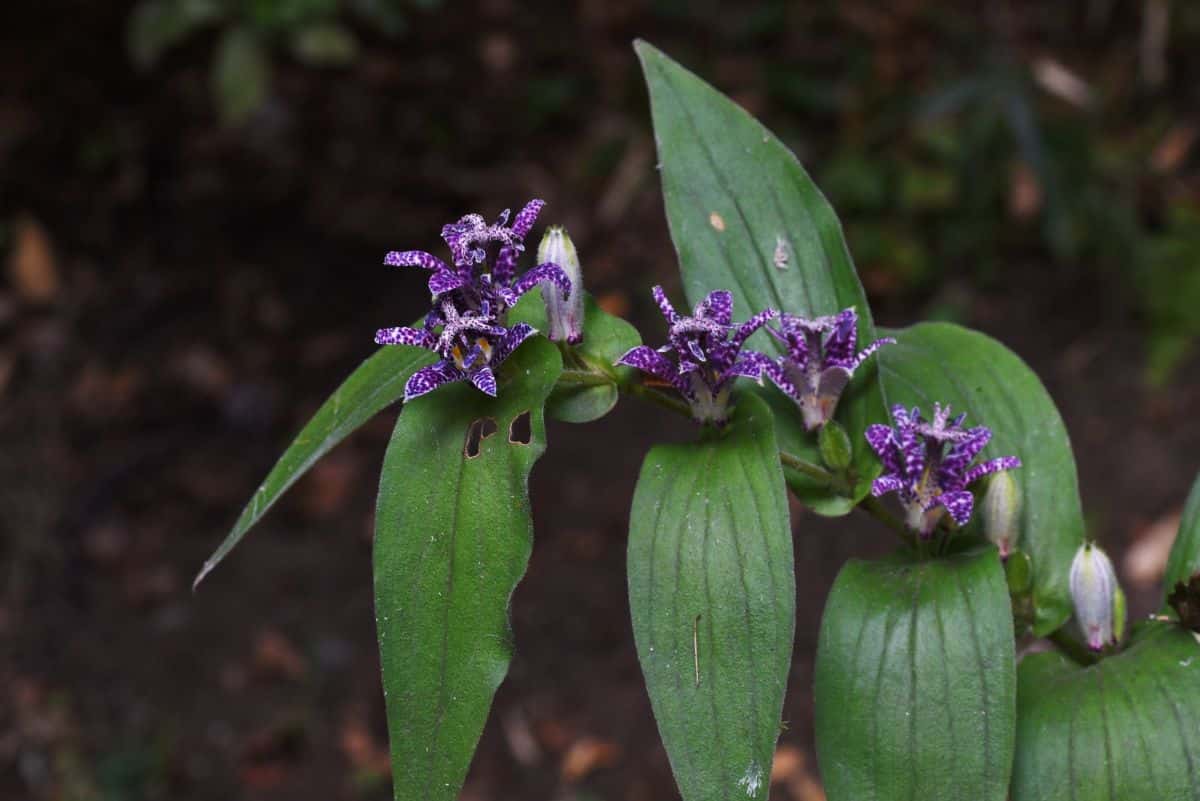
The toad lily thrives best under full - partial shade and well-drained soil. With these conditions in place, they will bloom in late summer - early fall.
Toad lilies are mini-sized plants that will make a great addition to your shade garden. Try out, specifically, the Raspberry mousse or purple beauty.
The plant has a height range of 2 - 3ft and a spread of 1 -2ft.
16. Oakleaf Hydrangea
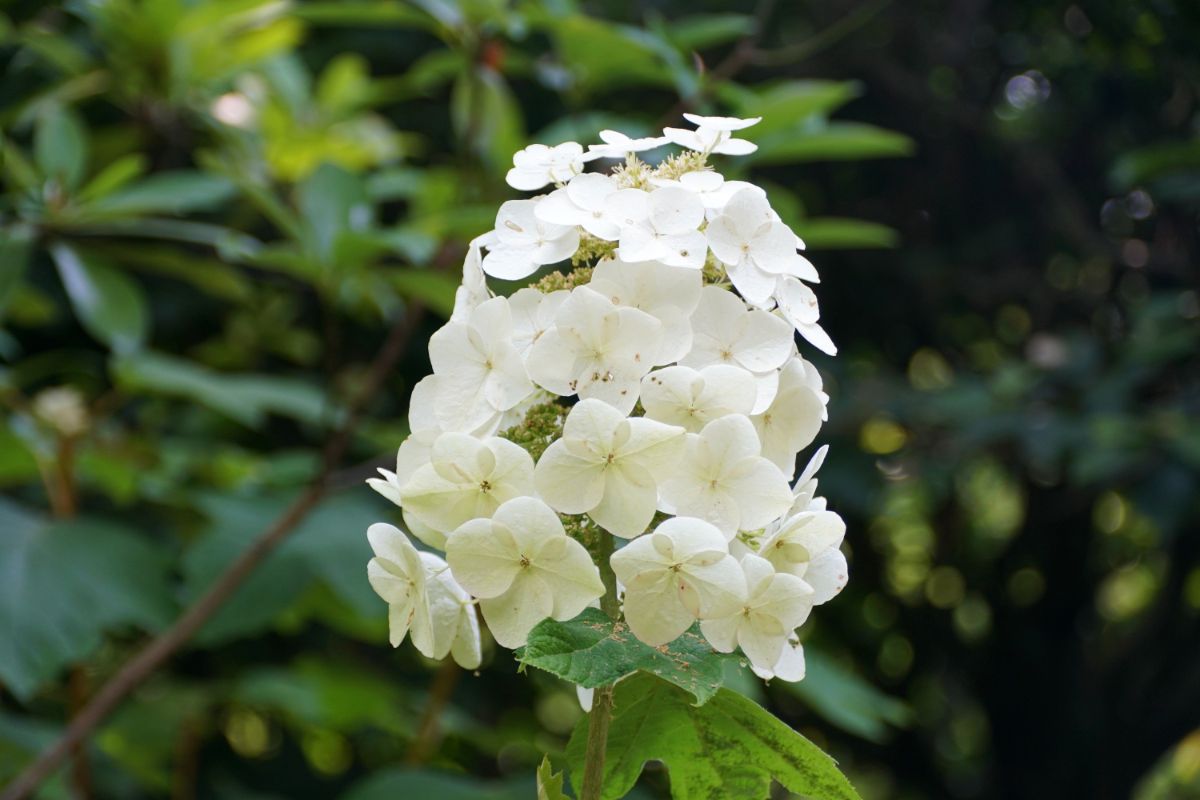
Oakleaf hydrangea is a beautiful shrub that brings forth great-looking flowers from early summer to fall.
They stand as the only variant that boasts foliage with gorgeous autumn color. They thrive best when exposed to morning sun and shade in the afternoon.
They have quite a spread, therefore, are better suited for a spacious garden.
Its height and width range is 4 - 8ft.
Ideal varieties to consider are the Gatsby star and Gatsby pink.
17. Heuchera
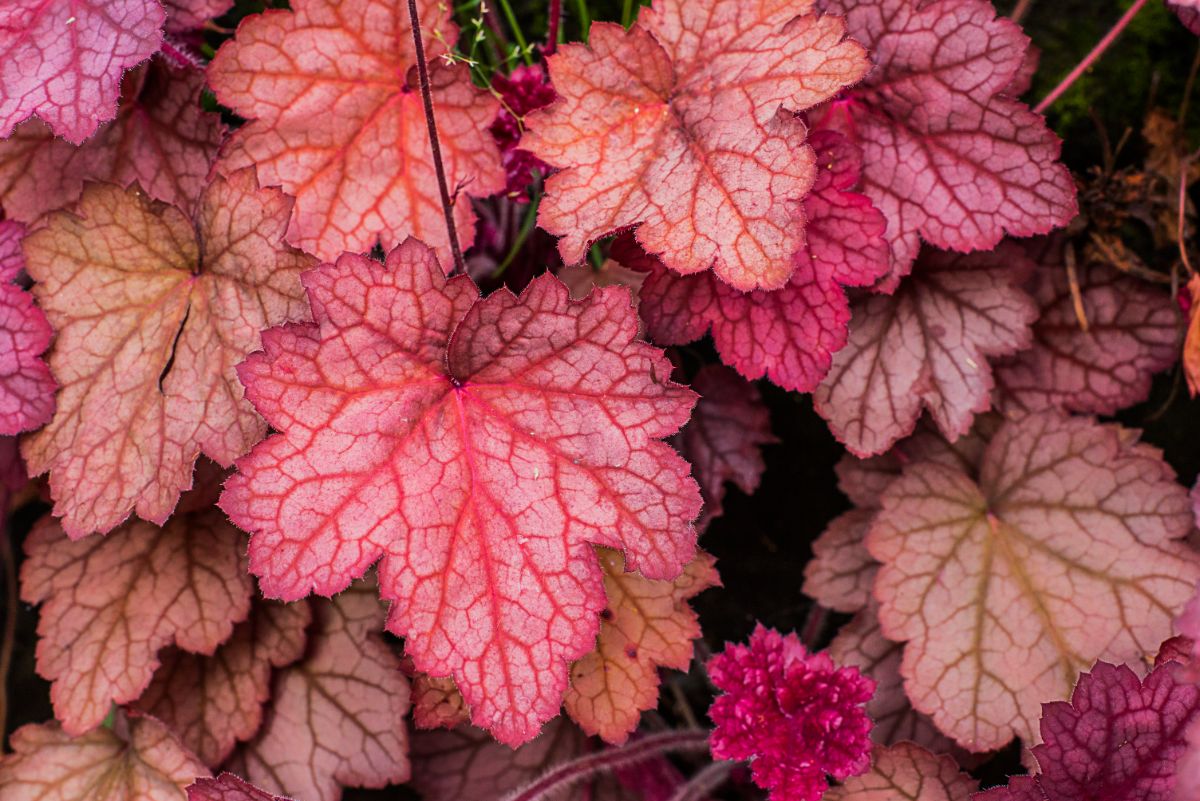
Seated pretty on our 17th spot is the unique, versatile perennial plant called the heuchera, also known as Coral bells.
They are versatile in the sense that they can thrive both under full sun or full shade.
Heucheras are best planted in a location that guarantees partial shade and average moisture.
They have a height range of 1 - 20ft and a width of 6 - 30 inches spread.
Ideal varieties to go for are the Citronelle or Color dream.
18. Dicentra
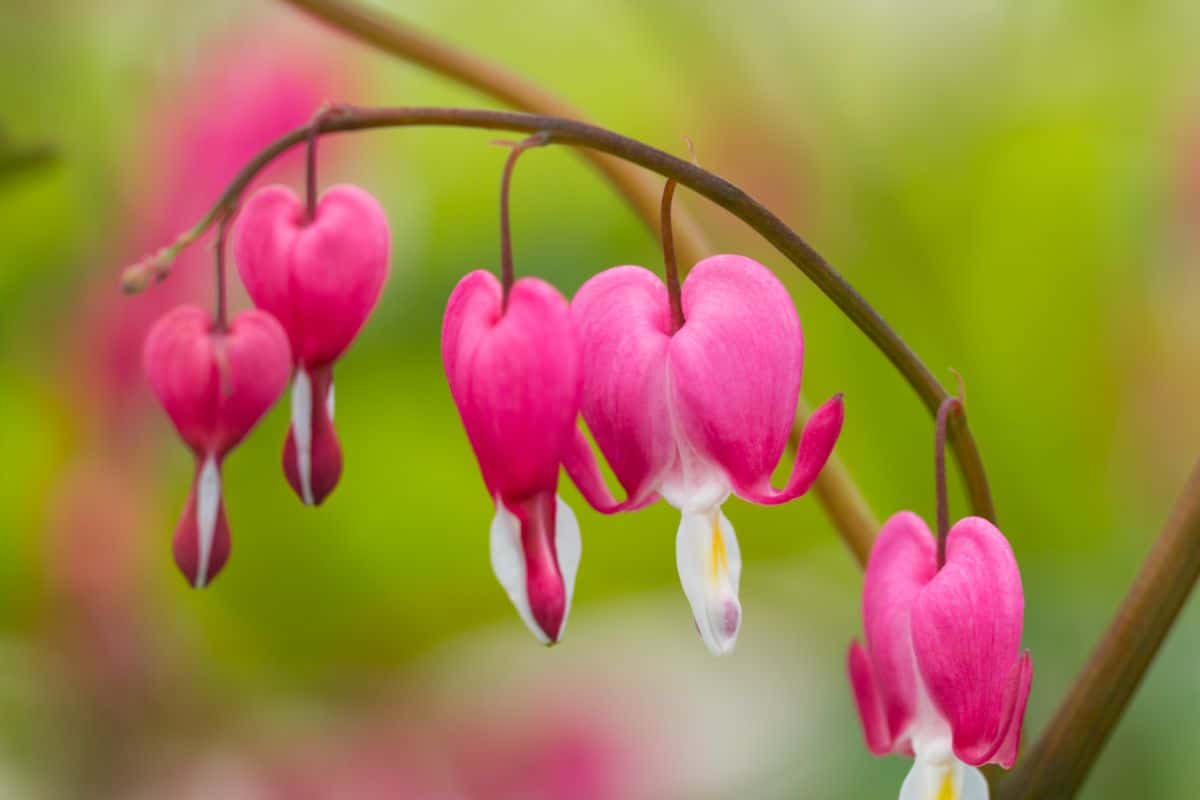
You might know this plant by its other name, 'Bleeding Heart.' Dicentras are low-maintenance, shade-loving plants with absolutely alluring flowers.
This perennial plant is best planted in well-drained soil in spring gardens. For that sparkle effect in your garden, go for the Aurora, King of hearts, or Valentine.
Dicentras have a height range of 6 inches - 3ft and a spread of 1 - 3ft.
19. Brunnera
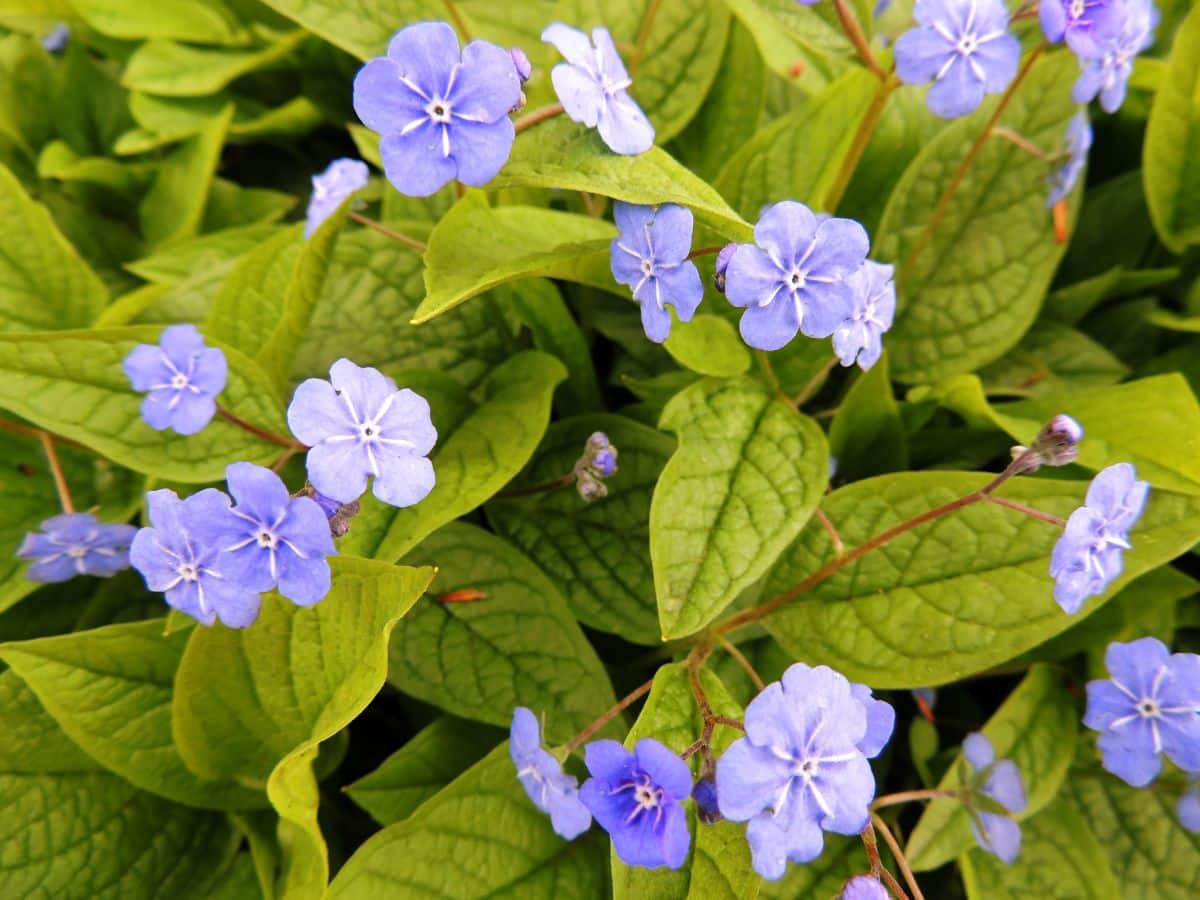
Brunneras are little, delicate-looking blue perennial flowers that are sure to bloom in spring.
They have a height range of 12 - 18 inches and an 18 - 30-inch spread, making them ideal for ground covers and creating a semi-shaded border.
Ideal varieties include the Silver heart, Jack's frost, and Alexander's great.
20. Epimedium
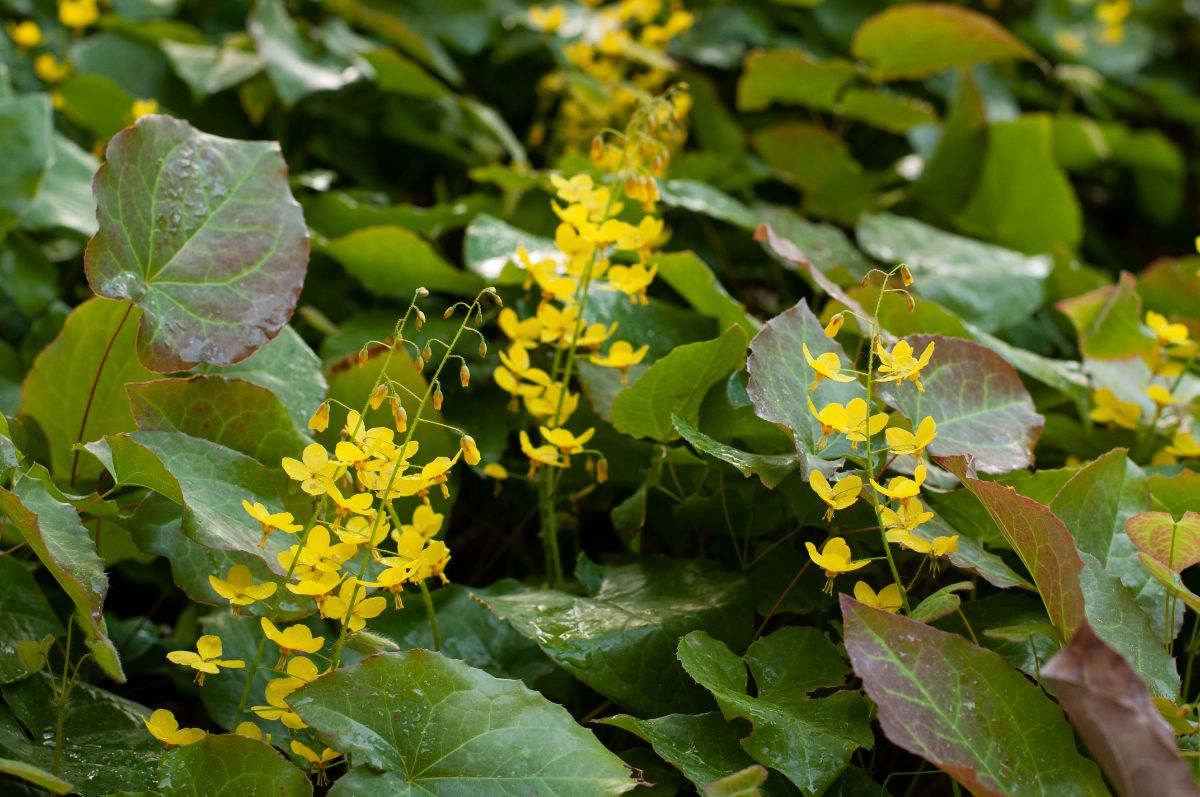
Epimediums are nicknamed 'Fairy wings,' and that is a crucial pointer to the magical effect they provide.
They have a distinct flower shape and bloom in mid-late spring. They love partial - full shade light conditions.
Epimediums have a height range of 8 - 12 inches and a 12 - 36-inch spread.
Ideal varieties to look for are the Lilafee, Candy hearts, and Pink Champagne.
21. Lingularia
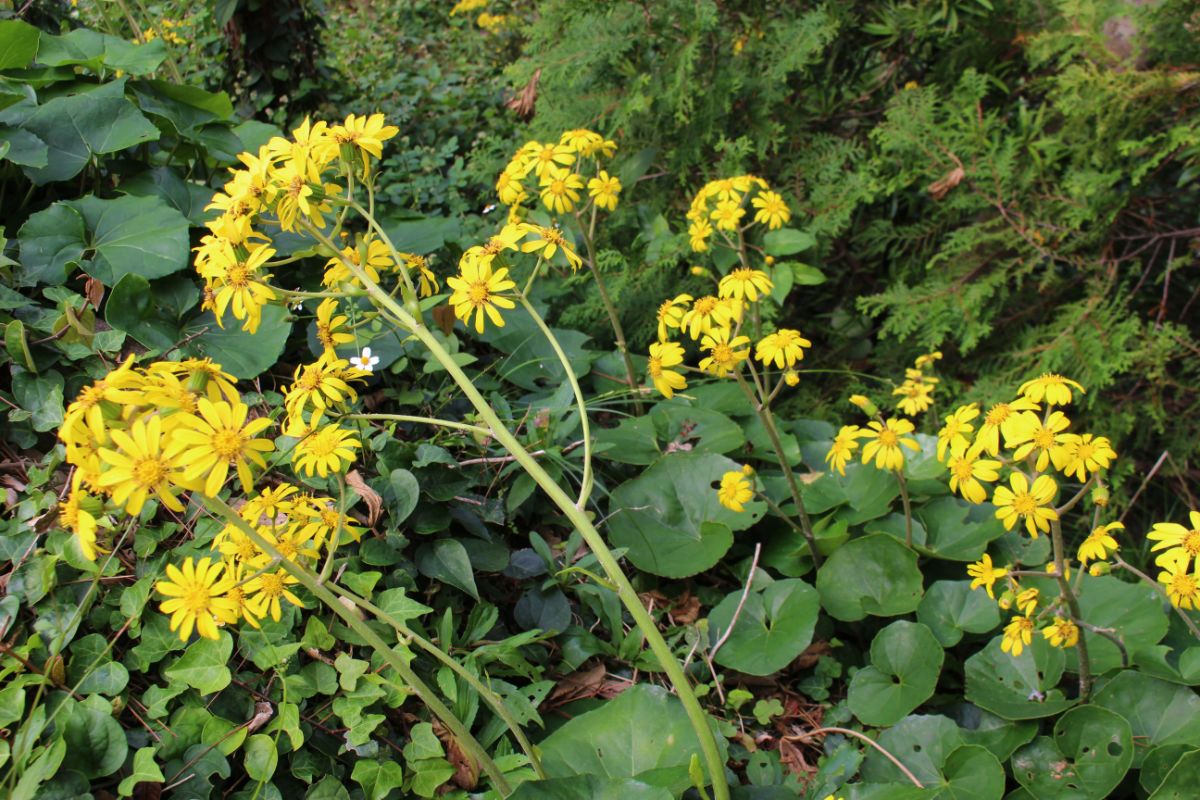
Lingularias, often called the 'Leopard plant,' are big-leaved plants that are perfect for shade gardens.
This plant loves water just as much as it loves shade.
They have a height range of 3 - 8ft and a 2 - 4ft width.
22. Asarum Canadense
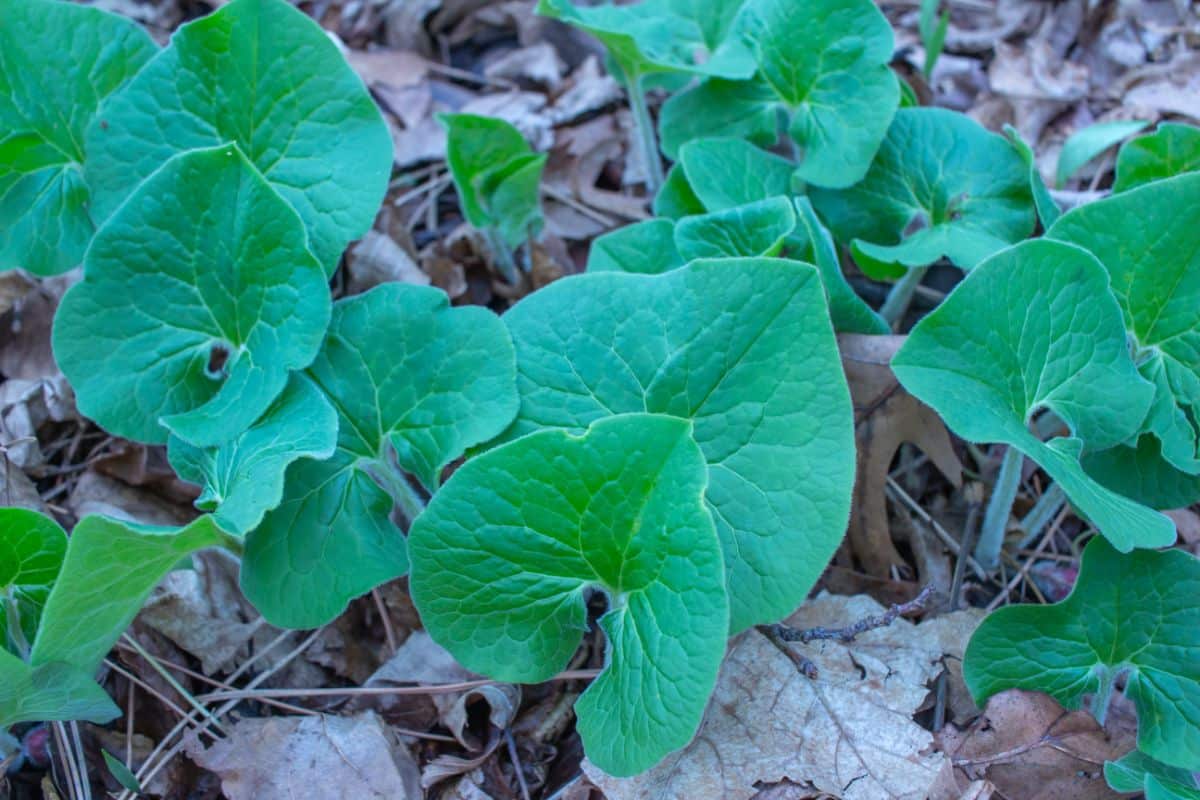
Asarum Canadense has large, heart-shaped leaves with tiny hidden purple-brown flowers that can be seen underneath.
The other common name of this perennial plant is 'Wild ginger.'
Asarum Canadense thrives best in light-full shade conditions.
They have a height and spread range of 6 -12 inches.
Ideal varieties perfect for your shade gardens are the Chinese wild ginger or the Canadian wild ginger.
23. Lobelia
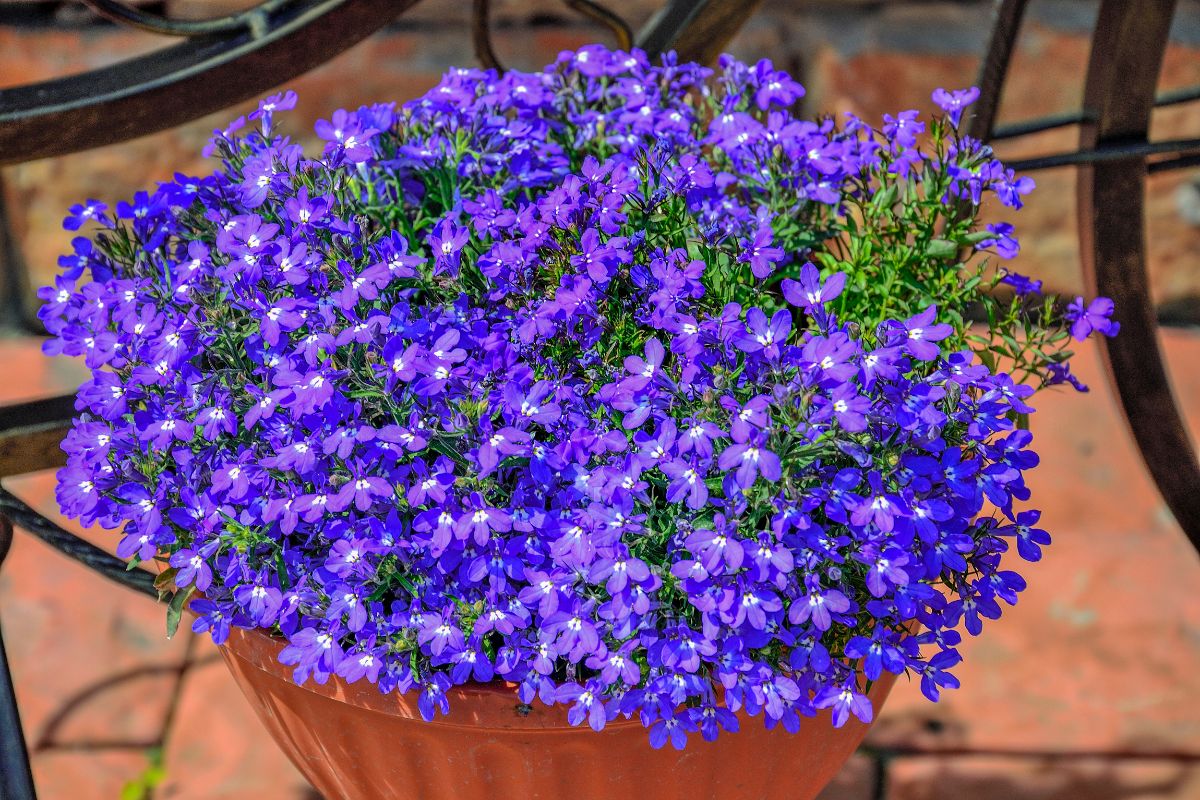
Lobelias are annual plants that look exceptionally pretty in hanging baskets and containers. This plant detests heat and loves full shade and sufficient watering.
A quick tip to note if you observe the plant spotting a messy look that will likely happen around mid-summer is to have it neatly trimmed.
This singular act of maintenance will see it bounce back in fall when the weather becomes cool.
Ideal varieties to consider include the Laguna Ultraviolet or Laguna dark blue.
Lobelias have a height range of 6 - 12 inches.
24. Dead Nettle
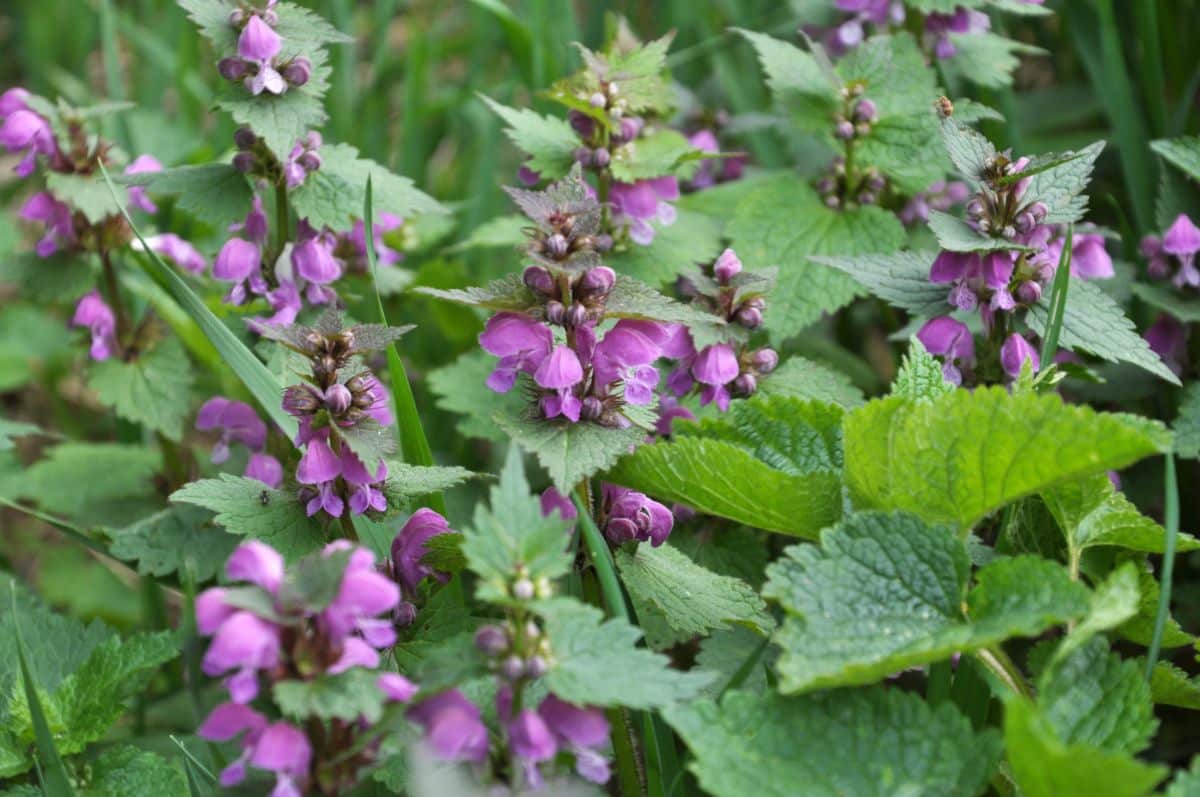
Pay no attention to the name this plant goes by and experience the beauty it holds. Dead nettles are low-maintenance plants that serve very well as ground cover plants.
They spot silvery or variegated foliage with yellow, pale pink, white, and purple blooms.
They have a height range of 6 inches - 3ft and a spread about 1 - 5ft wide.
Ideal varieties to grow are Pink chablis or Purple chablis.
25. Impatiens

Our list would have been incomplete without the Impatiens plant.
They have a rare but unique attribute of making quite a floral display when grown under full shade. This says that they flourish the most under ample shade conditions.
These annual flowers have a high range of 6 - 30 inches and a width of 1 - 3ft.
Seasoned gardeners go for the newer hybrids of this plant as they have been proven and ascertained to be more disease-resistant, unlike others that are prone to powdery mildew.
This plant disease is best avoided due to the dangerous effects it has on them, causing them to overwinter in the soil for years and even killing them.
Is the use of mulch necessary for shade-loving plants?
The application of mulch is highly essential in caring for your shade-loving plants.
This is because, no matter how much you water the plant, there is still a tendency to experience a cracked crust on the beds’ soil, visible due to dryness.
Application of mulch will see that the water is retained and released gradually into the soil instead of seeping off the beds.
How does wind affect shade plants?
Several shade plants do not tolerate wind and must be protected from it. When exposed to wind, the leaves of these plants might rip or shrink.
This can be avoided by setting up pockets, planting near trees to provide some canopy, or having them planted in the appropriate climate condition.
Final Note
Many stunning plants will do excellently well in shade gardens. The most important thing is to know which ones fit the shade available in your planting site.
With our carefully selected list of flowering plants for shade, as well as helpful pointers on the suitable varieties to go for, you will finally get to understand why the word 'dull' must not be associated with shady gardens.




